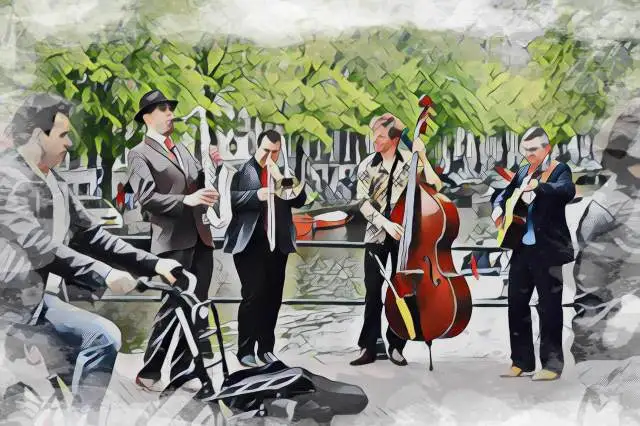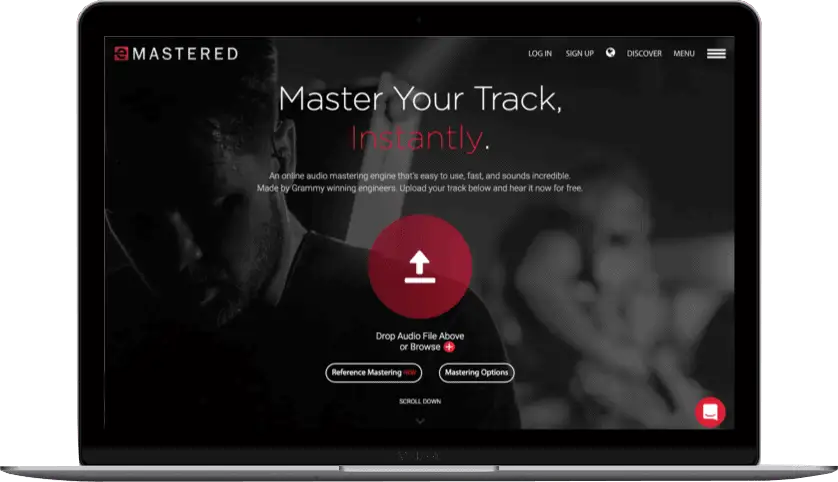The very nature of jazz is defined by creative freedom and improvisation, so it shouldn’t come as a surprise that countless musical instruments have been integrated into jazz records over the decades.
But which musical instruments are those we consider the genre's "backbones," and where can we listen to each one at its finest?
Today's article is all about jazz instruments: from the rhythm section to leads and the most unexpected ones, we'll describe each instrument and explain its place in the ever-changing jazz ecosystem.
The Rhythm Section
The rhythm section is the foundation of a jazz ensemble. Its main job is to support the lead instruments, but they can also have their own solos. The instruments that fall into this category are piano, bass, and drums.
Drums
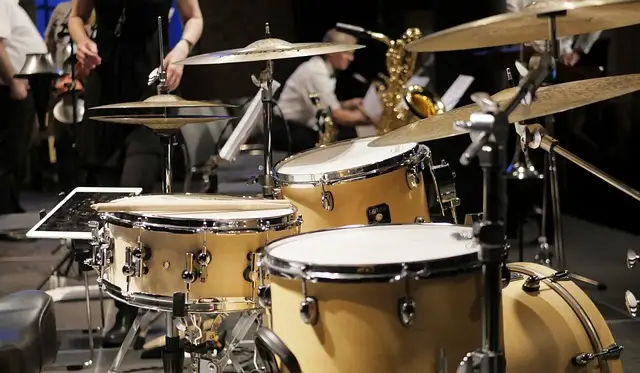
To say that drums in jazz are crucial would be an understatement! Furthermore, jazz drummers are usually a force to be reckoned with, not only keeping the tempo but also adding syncopation and evolving dynamics to drive the intensity of a piece.
Jazz drummers are responsible for the "swing" feel that you'll find in most jazz pieces. This is done by applying nuanced changes in notes to create a danceable rhythm, focusing on ride cymbal or hi-hat patterns and adding subtle variations in the snare and bass drum.
Jazz drum sets are usually quite minimalist, but most likely will include a bass drum, snare drum, tom-toms, hi-hat, and cymbals.
Best players : Max Roach, Buddy Rich, Art Blakey
Recommended listening : Art Blakey and the Jazz Messengers – Moanin' (1958)
Double Bass
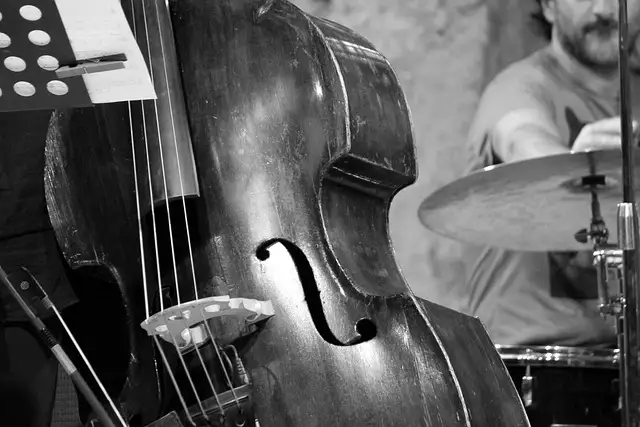
The double bass bridges the gap between the rhythm section and the leading instruments. Generally, the bassist plays the roots of the chords, enhancing the beat while also providing a solid foundation for the solo instruments.
The bassist can lock in with the drummer, often using walking bass lines to give a clear sense of direction to the song or take control of the melody with intricate patterns or melodic solos. While less popular, you might also see an electric bass guitar on stage (Jaco Pastorius.)
Best players : Charles Mingus, Paul Chambers
Recommended listening : Charles Mingus – Mingus Ah Um (1959)
Piano
The piano has a dual role in jazz: it helps keep the beat with rhythmic chords and provides the harmonic foundation on which lead instruments can improvise.
Just like drummers are responsible for the "swing," pianists in jazz provide the so-called "comping": accompanying the melody by playing chords in a lively and rhythmic fashion while leaving space for other instruments to take center stage.
Although considered a rhythm instrument, piano players also get to play solos and improvise music as they go.
Best players : Thelonious Monk, Bill Evans
Recommended listening : Bill Evans Trio – Sunday at the Village Vanguard (1961)
Leads
The lead instruments in jazz are usually those that play the main melody and have recurring solos. These instruments give the ensemble a distinctive voice and are the main tools used to express the nature of a song. Woodwind and brass instruments are the epitome of lead instruments in jazz, but they're not the only ones.
Guitar
Unlike in rock or blues, the guitar in jazz music has a more nuanced role similar to the rhythm foundation provided by the piano. In some cases, guitarists play single-note melodies, fulfilling the role of a lead instrument, but can also simply accompany the horns with comping chords.
Over the decades, countless guitarists have explored the possibilities of this versatile instrument in jazz, either with an acoustic or electric guitar or by blending and transcending genres. Jazz guitarists often use a clean tone, which allows the instrument's natural warmth to shine through.
Best players : Wes Montgomery, Pat Metheny
Recommended listening : Wes Montgomery – The Incredible Jazz Guitar of Wes Montgomery (1960)
Saxophones
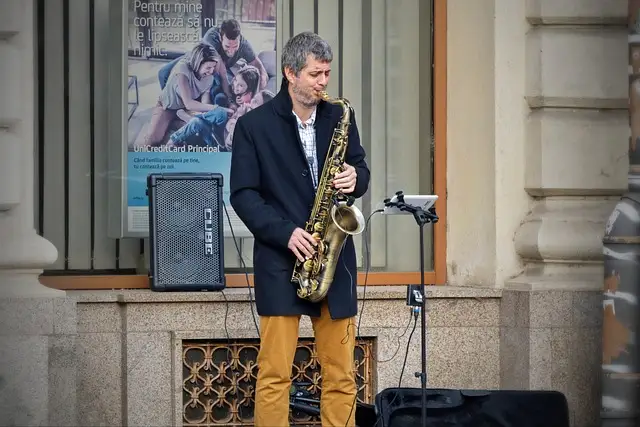
The saxophones go hand in hand with the birth and development of jazz. Over the decades, these versatile wind instruments have adapted to the genre’s various styles and remain a constant presence on stage.
There are four main types of saxophones commonly used in jazz:
Alto Saxophone : With its bright sound, the alto saxophone is usually used as a lead voice. It has a wide range and great expression, which is why it's often used for galvanizing solos.
Tenor Saxophone : Deeper than the alto, the tenor saxophone strikes a balance between power and warmth, which makes it ideal for players who switch between solos and comping.
Soprano Saxophone : The soprano saxophone has a higher pitch and a more piercing sound than the alto. It adds an ethereal quality to the jazz band and has the dynamism typical of a singer’s performance.
Baritone Saxophone : The baritone’s sound signature is the deepest in the saxophone family. It's not that common as a lead instrument but it can add resonance and depth when combined with other horns, especially in big bands.
Best players : John Coltrane (tenor, soprano), Charlie Parker (alto)
Recommended listening : John Coltrane – A Love Supreme (1965)
Trumpets
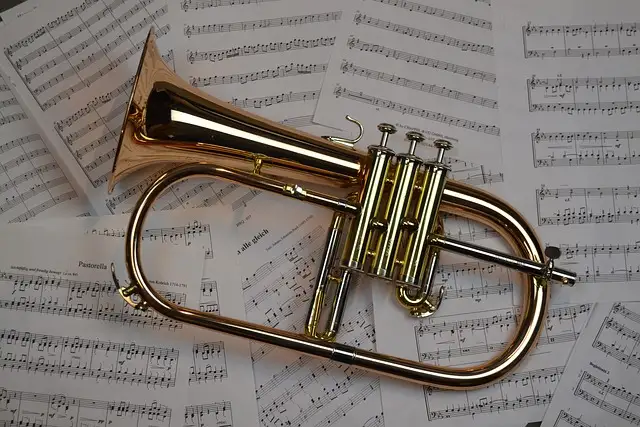
Just like saxophones, trumpets have been used in jazz since the genre’s inception. What makes it so popular are its bright sound, portability, versatility, and the ability to produce a wide sonic palette, from staccatos to legatos.
Here are the types of trumpets used in jazz:
Bb Trumpet : It’s the standard trumpet in jazz because it’s the most versatile. It can produce both powerful high notes and enveloping lower tones. You’ve probably seen it countless times.
Flugelhorn : Almost identical to the trumpet except for a wider bell, the flugelhorn has a softer and more mellow tone, which makes it great for comping but not ideal as a lead instrument.
Cornet : The cornet is like a trumpet but with a warmer and quieter sound. The trumpet replaced it almost entirely, except in old-style jazz bands.
Best players : Miles Davis, Dizzy Gillespie, Chet Baker
Recommended listening : Miles Davis – Kind of Blue (1959)
Trombones
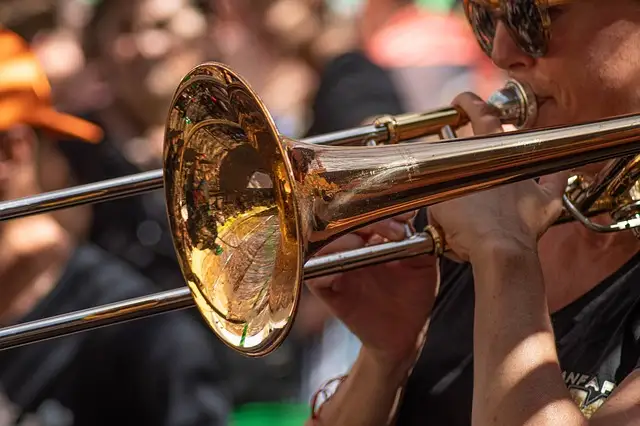
Meaning “big trumpet” in Italian, the trombone is another important brass instrument used to play jazz. Its signature sound is rich and powerful, and the possibility to glide between notes through a slide mechanism makes it an extremely versatile instrument.
There are several types of trombones used in jazz:
Tenor Trombone : It’s the most common type of trombone in jazz. The tenor trombone has a medium range and is versatile enough to handle melodic lines and rhythmic harmonies alike. It typically plays in the same range as a baritone voice.
Bass Trombone : Compared to the tenor trombone, the bass trombone has a deeper and fuller sound, so it’s usually used to enhance the lower registers of a jazz ensemble.
Valve Trombone : Unlike the trombone types mentioned above, which use a slide to change pitch, the valve trombone uses valves like the ones on a trumpet. This makes it easier to play fast passages but sacrifices the smooth gliding sound that makes the slide trombone popular.
Best players : J.J. Johnson, Curtis Fuller
Recommended listening : J.J. Johnson – The Eminent Jay Jay Johnson, Vol. 1 (1953)
The Unconventional
The instruments that follow may not be as common as other jazz instruments, but they bring unique sounds and textures to a jazz band, and have been used by many iconic players over the years.
Vibraphone
The vibraphone is often used in modern jazz and works well as both a rhythm and lead instrument. With its metallic bars and resonating tubes, it’s an instrument that produces a distinctive and powerful sound. Jazz communities are divided: some love it, others find it out of place.
Best players : Lionel Hampton, Milt Jackson
Recommended listening : Milt Jackson – Bags' Groove (1957)
Accordion
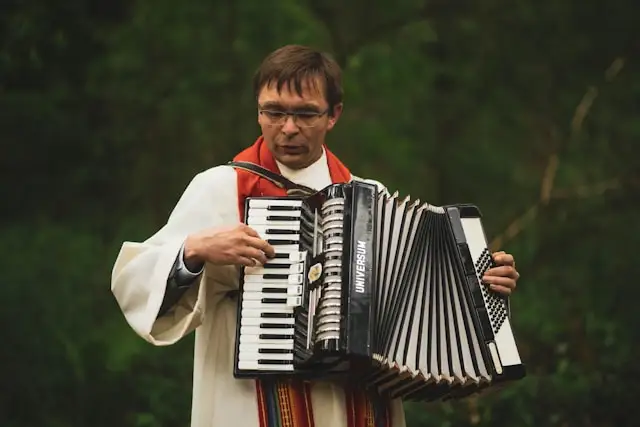
Mostly thanks to the incredible oeuvre of jazz musician Richard Galliano, the accordion has carved out a niche in jazz styles influenced by European folk music, such as Gypsy jazz and tango jazz. The instrument's ability to produce melody and harmony simultaneously makes it an interesting addition to ensembles of all sizes, and probably the hardest instrument to master!
Best players : Richard Galliano, Art Van Damme
Recommended listening : Richard Galliano – French Touch (1998)
Violin
Violin and jazz? Of course! When used right, this instrument typical in classical music can greatly expand the sonic palette of jazz ensembles without denaturalizing it. It might not have the swinging properties of other instruments, but the violin can magnify the poignancy of a piece and take it to the next level.
Best players : Stéphane Grappelli, Jean-Luc Ponty, Mark Feldman
Recommended listening : Stéphane Grappelli – Django Reinhardt & Stéphane Grappelli: Quintet of the Hot Club of France (1934-1948)
Bb Clarinet
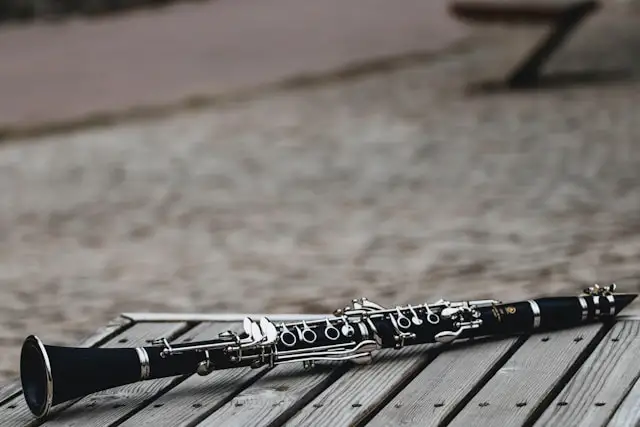
Though less common nowadays than in the early days of Dixieland and swing, the clarinet’s woody tone and wide range make it a perfect solo instrument for jazz with a nostalgic vibe.
Best players : Benny Goodman, Artie Shaw, Eric Dolphy (bass clarinet)
Recommended listening : Benny Goodman – The Famous 1938 Carnegie Hall Jazz Concert (1938)
Flute
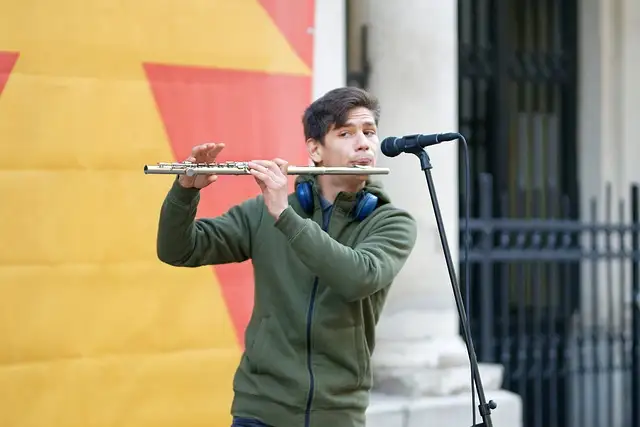
The flute's agility makes it perfect for fast and intricate jazz parts, as well as improvised solos. With its light and airy sound, flutes provide an interesting contrast to the more traditional brass and woodwind instruments.
Best players : Herbie Mann, Hubert Laws
Recommended listening : Herbie Mann – At the Village Gate (1961)
Marimba
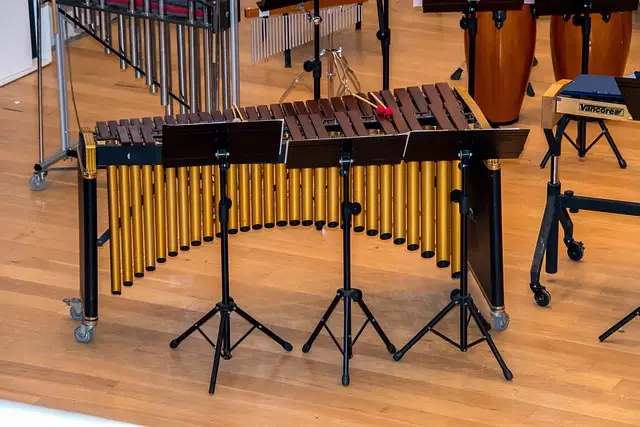
Essentially a vibraphone but with wooden bars, the marimba offers a warmer and earthier sound. It's not that common in jazz, but some innovative musicians have proved how expressive and immersive this instrument can be in jazz orchestras.
Best players : Bobby Hutcherson, Dave Samuels
Recommended listening : Bobby Hutcherson – Components (1966)
Hammond Organ
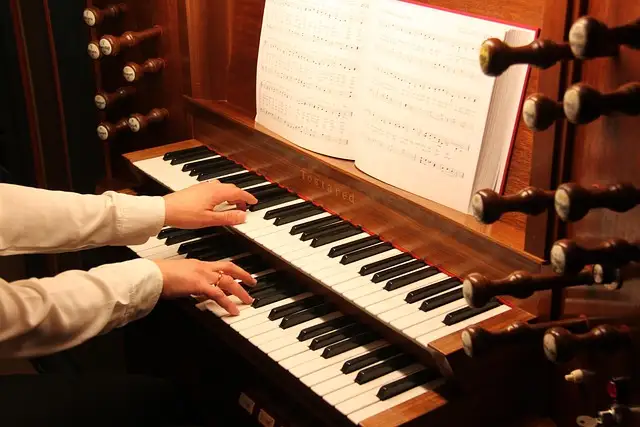
The Hammond organ comes from gospel and soul, genres that often intertwine with jazz. It can produce sustained chords and bass lines simultaneously, it can be either distorted or soothed out through reverbs and delays, which further expands its sonic palette.
Finally, it has a distinctive tone, and the ability to fill out a room with a powerful sound. What’s not to love about this electric organ?
Best players : Jimmy Smith, Larry Young
Recommended listening : Jimmy Smith – Back at the Chicken Shack (1963)
And that's all I know about jazz instruments! As I said at the beginning of the article, the beauty of jazz lies in its unpredictability and expressive freedom. While the ones mentioned above are the most common instruments, there are plenty of others borrowed from other genres or used in larger ensembles that can make a jazz piece unique.
If you've just started exploring this timeless genre, my final recommendation is to do so with an open mind: learn from the masters that came before you, while considering the endless options offered by the instruments at your disposal. Each woodwind and brass instrument comes with certain sonic characteristics that might make it blend well with your existing ensemble, so choose each component of your band perfectly, and never stop experimenting. Have fun!


